The Huawei P8 Lite Review
by Brandon Chester on July 27, 2015 8:00 AM EST- Posted in
- Smartphones
- Huawei
- Mobile
System Performance
The P8 Lite is the first device with Qualcomm's Snapdragon 615 that we've reviewed. The Snapdragon 615 implementation in the P8 lite has two clusters with 4 Cortex A53 cores. With this bin the first cluster has a peak frequency of 1.5GHz, while the second has a peak frequency of 1.11GHz. This is slightly slower than the 1.7GHz implementation in the HTC One M8s, but it still represents a 25% improvement in clock speeds on the big cluster over Snapdragon 410. In theory since there's support for HMP the OS could schedule threads to use all 8 cores at once, but in essentially every user workload it will act as a quad core Cortex A53 CPU.
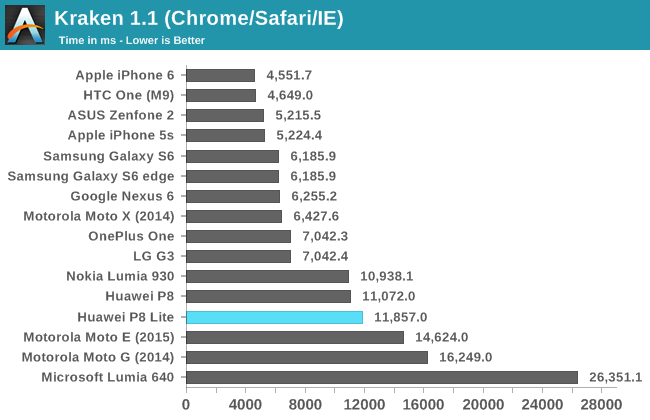
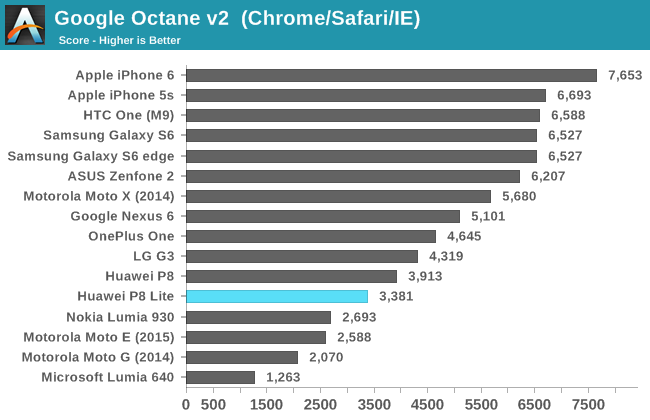

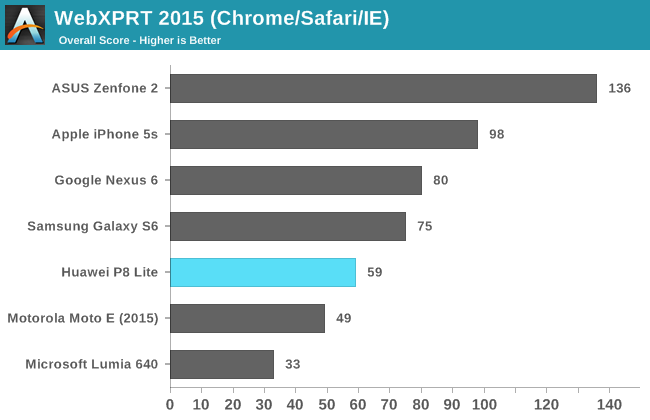
The P8 Lite shows good improvement over devices that use Qualcomm's Snapdragon 400 and 410 SoCs. In both versions of WebXPRT and in Mozilla Kraken we see improvements of about 20%, with Google Octane improving by over 30%. This is in line with what one would expect from the 25% clock speed improvement on the big cluster when compared to Snapdragon 410.
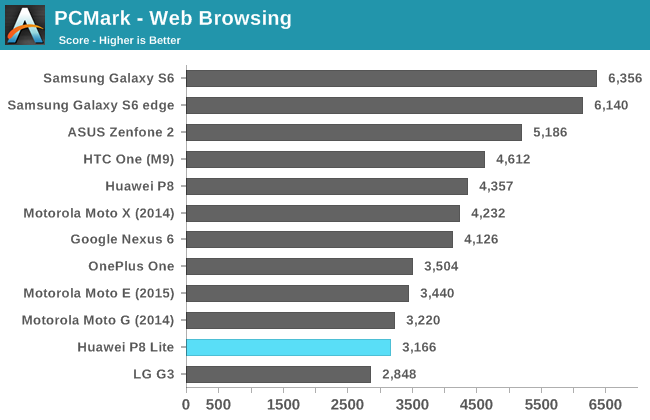
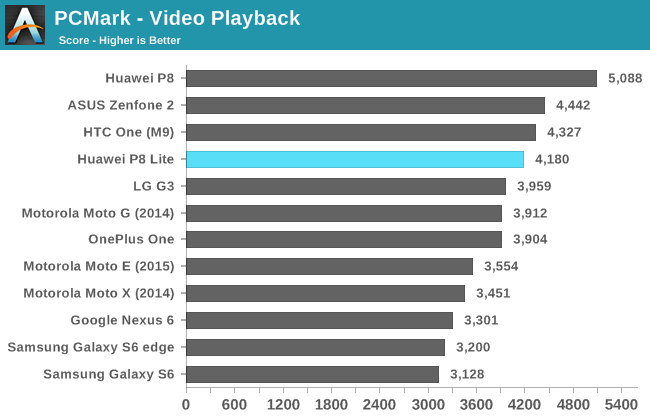
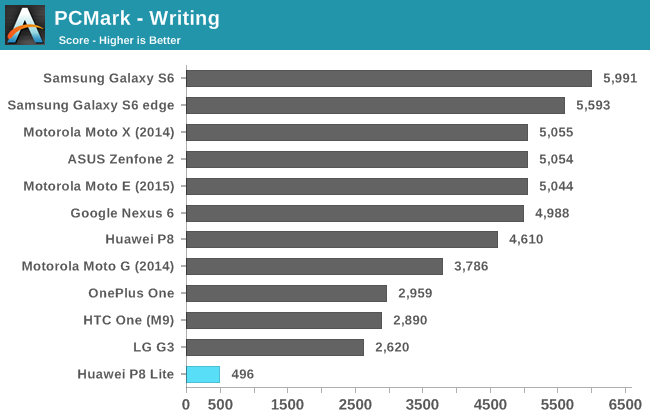
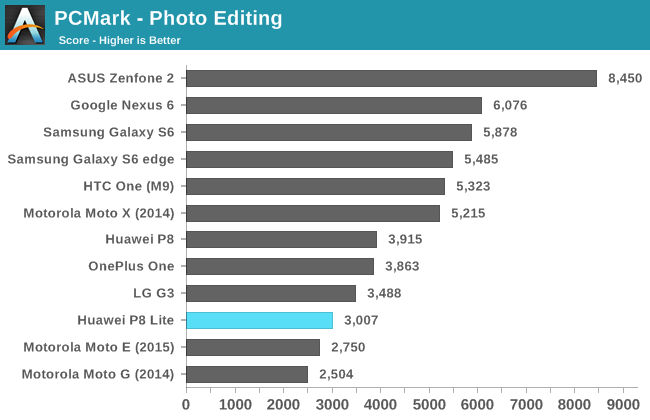
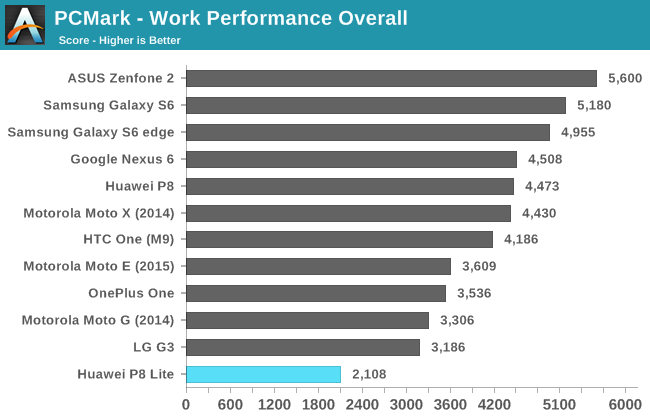
PCMark is a benchmark that focuses more on real-world scenarios where race to sleep speed is paramount, but the user workload also increases with faster CPUs. Software can also be as important to the test as hardware, and we've seen gains on devices running Android Lollipop over those running KitKat. In it we see that the Huawei P8 Lite doesn't do very well overall. The main cause of this is its score in the writing sub test. This is not a new situation for Huawei, as all of their KitKat devices score somewhere around 500 points in that test due to problems with Dalvik. If that test were to be removed, the P8 Lite would perform slightly better overall than the Moto E. Ultimately the result in PCMark is just an example of how performance is hardly software agnostic, and demonstrates why devices should not be launching with KitKat this far into 2015.
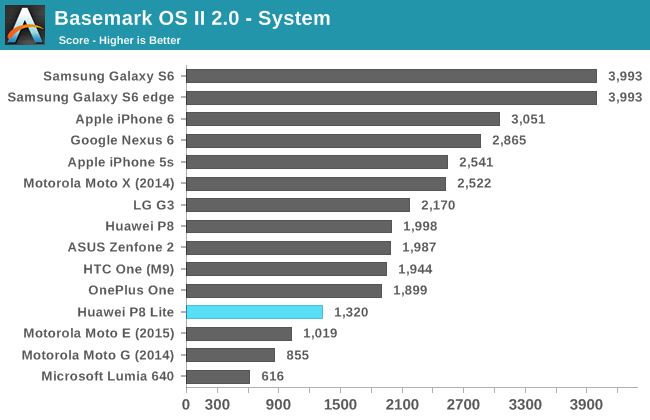
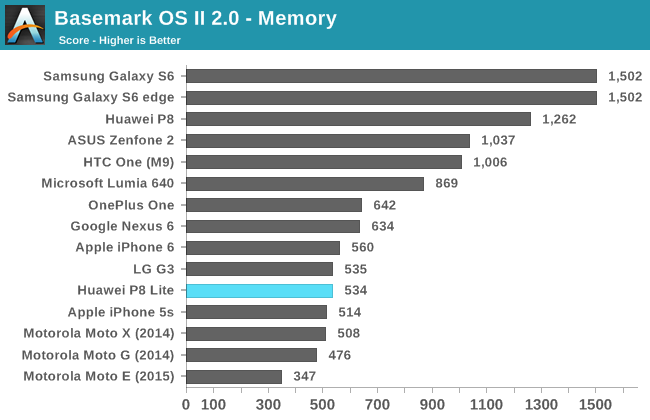
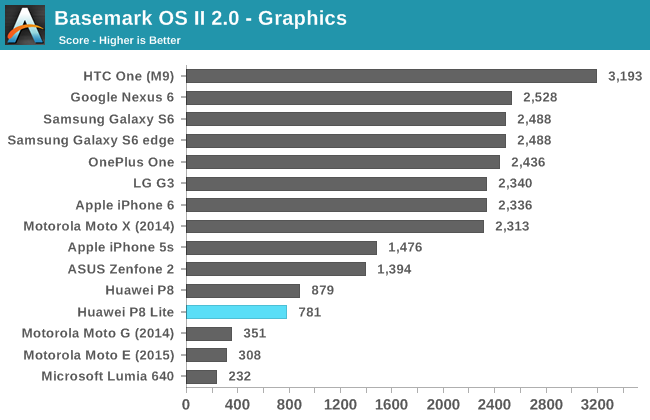
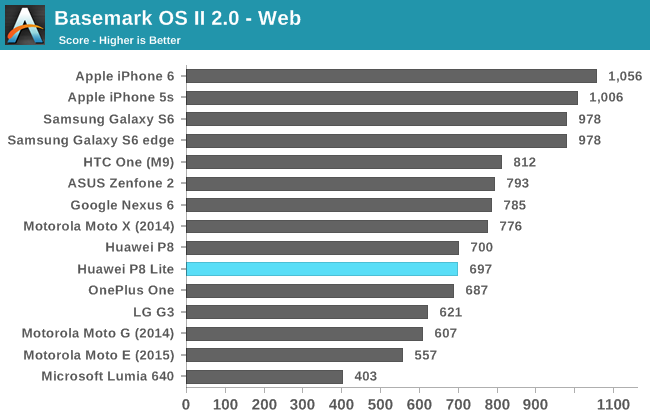
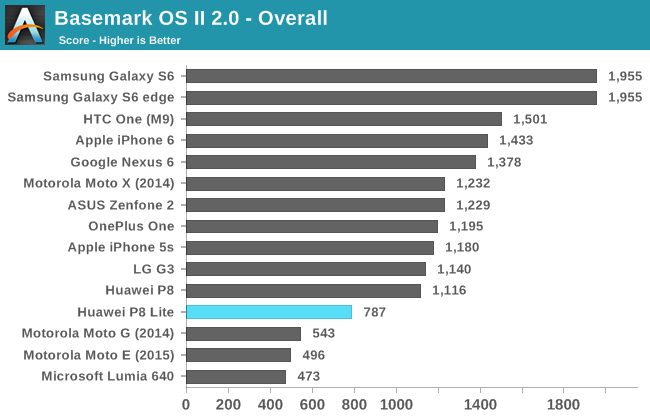
In BaseMark OS II we again see the P8 Lite holding a lead over Snapdragon 400 and 410 devices, with the largest improvement being in the graphics sub test.
Overall the P8 Lite shows significant improvements over the performance of lower end Snapdragon 400 and 410 based devices. CPU improvements are right in line with the 25% greater clock speed than Snapdragon 410 on the big cluster of Cortex A53 cores, and BaseMark OS II shows us that there are substantial GPU improvements which will be detailed on the next page.










45 Comments
View All Comments
Pissedoffyouth - Monday, July 27, 2015 - link
Why would you do that though, considering the A53 is so low power anyway. It makes no sense at all. Instead of second cluster put a single A57 core in or somethingSamus - Monday, July 27, 2015 - link
Every little bit helps.protomech - Monday, July 27, 2015 - link
4.5 hours to charge a 8.4 Wh battery at 5W is ludicrously bad.Is the issue that the wall plug isn't actually delivering 5W (5V 500 mA only maybe?) or that it simply takes an age to go from nearly full to 100%?
While the 100% charge time test has its uses, it may be more useful to report 0% to 80% charge time, as this should avoids charge taper near the top and is a better indication of how much charge can be recovered in a short period (airport, etc).
webdoctors - Monday, July 27, 2015 - link
Zenfone 2 at $200 makes this phone a flop, especially considering its not even coming with lollipop, wut?!The last paragraph in this review is gold and nicely sums up the entire article:
The P8 Lite wouldn't be a bad recommendation if it was priced a bit lower and received an update to Lollipop. While I don't know if it would be possible for Huawei to reach a price of $150, I would need the P8 Lite to be priced somewhere below $200 before I could really recommend it. At this time there are simply better options in the $200-300 range, and so at its current price point the P8 Lite is a phone I find difficult to recommend.
utmode - Monday, July 27, 2015 - link
'Kitkat?'Gee, I began to hate this company
zodiacfml - Monday, July 27, 2015 - link
I have a problem with this company. Most of the phones they're selling these days are not in tune with the market based on specifications, build, and/or branding. They're an adequately sized company selling communications equipment but I doubt they are big and experienced as ASUS or Motorola. Gigabyte also makes phones and laptops but they're reasonably priced as they are not a big brand.Anyway, for the specs and review, I'd put this on par or even below a Moto G (2015 and 2014). Yes, it is a thin phone but it ends there.
Buk Lau - Wednesday, July 29, 2015 - link
Nah that's a huge misconception. Huawei if anything is many times bigger than Asus and Motorola combined. They provide equipment and build cellular structures for EUs and they are a government company, and hold enough patents in mobile network that can almost compete with Qualcomm. Smartphone is only a one sector of their business and they are just not taking it seriously enoughToTTenTranz - Monday, July 27, 2015 - link
I wonder why Huawei hates having a decent wifi connection in their models.ultimatebob - Monday, July 27, 2015 - link
Hey Anandtech, the forums are down again. Can you get someone to look at that when you get a chance?Setec - Monday, July 27, 2015 - link
Actually, the OnePlus One price was dropped to $249 a few months ago.